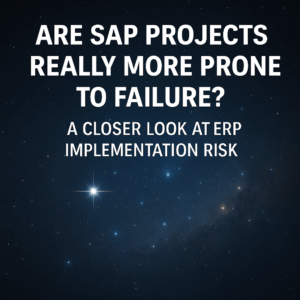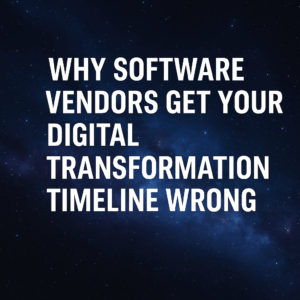Like most ERP deployments, a successful SAP S/4HANA implementation requires a great deal of discipline. SAP’s technological advancements make complete business transformation possible, but not without risk.
For better or for worse, SAP has a reputation for troubled implementations. Though many have implemented the product successfully, news of challenged implementations among its Fortune 1,000 customer base tend to overshadow the successes. These distressed deployments are not a result of bad luck or broken software. Instead, they are a result of the failure to leverage SAP implementation best practices.
Unfortunately, SAP’s ASAP methodology and Solution Manager (SolMan) don’t provide all of the answers. They provide a solid foundation as a starting point, but more is required to enable a complete digital transformation.
Below are some of the ways to ensure a successful SAP S/4HANA implementation:
Table of Contents
TogglePrepare to leverage the capabilities of SAP S/4HANA
SAP has invested heavily in its cloud solution and the HANA framework. With its in-memory performance and robust functionality, the software provides truly transformational game-changing possibilities for many organizations.
But fully understanding the breadth of functionality can be challenging. Many customers require more fundamental cultural changes to their organization prior to embracing the functional possibilities. For example, SAP tends to enable a certain degree of standardization, scale, and efficiency, but that may not align with your current state culture. Be sure your organization is ready to embrace these changes before trying to implement them.
Adequately invest in your business process management workstream
Because of its vast functional capabilities, mapping future state business processes early on is critical to a successful SAP S/4HANA implementation. Many SAP customers bypass this important business process management workstream, which typically leads to trouble later on.
Despite its leading market share and broad functionality, SAP software is not perfect. It has deficiencies and some functions will not align well with your needs. It is important to map your business processes prior to implementation, while identifying gaps between what you want and what SAP can provide. This will help you prioritize where you might need to change your business processes, customize the software, or change your people.

Make the business process and organizational changes required of an SAP S/4HANA implementation
Your business process management activities will identify necessary business process and organizational changes. There will inevitably be significant opportunities for business process improvements and changes to employee roles and responsibilities – many which can even be implemented prior to the SAP rollout.
This requires a commitment to effective organizational change management, communications, training, and cultural change. This workstream should go well beyond traditional end-user training. You will need to define gaps between your current- and future-state business processes, begin implementing the cultural changes required to fully embrace the new software, and other key organizational change activities.
The below video provides some guidance on how to manage organizational change in your S/4HANA implementation. (Please note that this video was recorded while I was still with Panorama Consulting, so please disregard the outdated contact information).
Implement a strong third-party quality assurance and risk mitigation framework
When left unattended, SAP implementations tend to get off track. Loss of focus, project delays, and budget overruns are all too common. A strong quality assurance and risk mitigation framework will provide the guardrails that your project needs to stay on track.
Most importantly, an effective QA and risk framework identifies potential issues before they ever become problems. Much like a “canary in a coalmine,” this process ensures that risks are identified and mitigated before they kill a project.
For example, we recently worked on a large global SAP implementation for a large company undergoing significant cultural changes. Their lack of investment in organizational or cultural change didn’t feel like a problem to the project team, but our experience to the contrary allowed them to remediate employee resistance bubbling below the surface. Had they not detected this risk when they did, it would have been too late to resolve.
Below is a summary of the quality assurance and risk mitigation framework we deploy for clients on their SAP S/4HANA implementations (as well as for other types of ERP implementations).
Build your internal SAP S/4HANA competency via a center of excellence
If your intent is to continuously optimize your processes and systems into the future, you will need to build your internal competencies accordingly. Your IT and business support resources will need to be retrained, refocused, and prepared to own the SAP solution well after the consultants are gone.
More importantly, an SAP center of excellence allows you to look for ways to constantly improve your processes and the way people are trained internally. It also enables you to leverage new S/4HANA functionality as deployed via upgrades.
The below video outlines some tips on how to institute an SAP S/4HANA center of excellence. (Please note that this video was recorded while I was still with Panorama Consulting, so please disregard the outdated contact information).
SAP’s technology has come a long way in recent years. The question isn’t whether or not the software is good enough. The only question is whether or not you are ready to invest in a complete digital and business transformation.
What lessons have you experienced with your S/4HANA implementation so far? I would love to hear your comments below!





